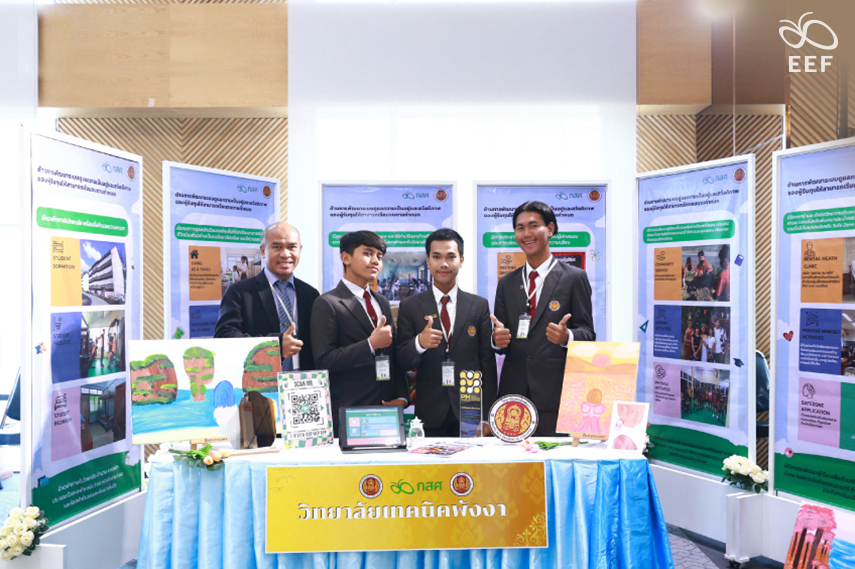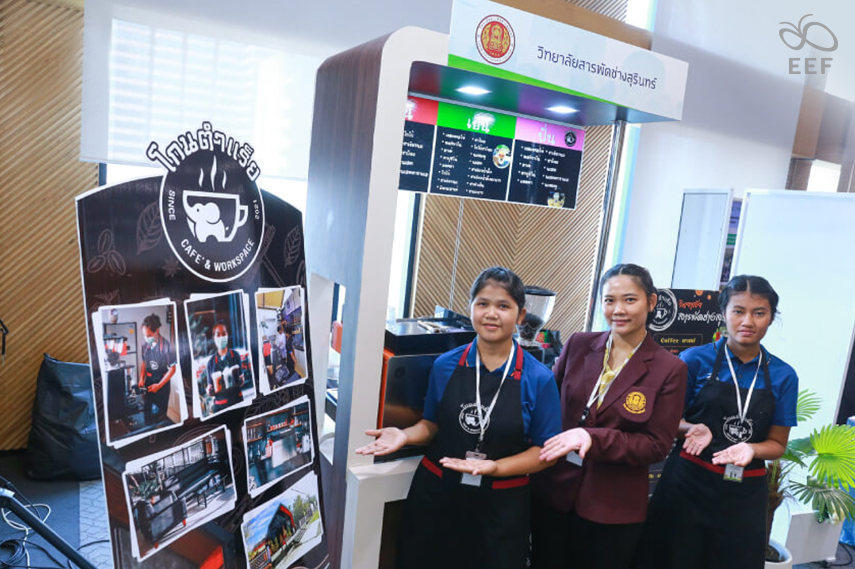
Thailand’s pursuit of the Thailand 4.0 vision focuses on unlocking the workforce’s potential and driving sustainable economic growth. Policy-makers recognize the crucial role of vocational education and training (VET) in achieving these objectives. They are actively addressing VET challenges by enhancing program quality and relevance, aligning them with industry needs, and fostering closer collaboration between educational institutions and employers. These proactive measures aim to bridge the education-market gap, equipping individuals with the skills and competencies necessary for success in the digital era and establishing a solid foundation for future workforce development. By prioritizing vocational education, Thailand aims to ensure that its labor force is well-prepared to meet the demands of an increasingly dynamic and technology-driven economy.

Thailand 4.0 is an economic model aimed at addressing three main challenges from three previous development models: a middle-income trap from agriculture of Thailand 1.0, an inequality trap from the light industry of Thailand 2.0, and an imbalanced trap from the advanced industry of Thailand 3.0, and achieving economic progress. It focuses on innovation-driven growth through technological advancements, enhanced creativity, and increased research and development capacity. Improving human resources through vocational education and training is a key aspect of the education policy under Thailand 4.0. The model targets specific sectors known as First S-curve, including next-generation automotive, smart electronics, medical and wellness tourism, agriculture and biotechnology, and future-oriented foods; and New S-curve, including robotics, aviation and logistics, biofuels and biochemicals, digital industries, and a medical hub.
However, the VET sector in Thailand faces significant challenges that hinder its effectiveness and reputation. The scarcity of skilled labor and the shortage of qualified VET teachers amount to a gap between workforce skills and industry requirements, impacting the fulfillment of market demands, and compromising the quality of education. Furthermore, VET suffers from a perception problem, being considered less prestigious than higher education, resulting in a low number of students opting for vocational education. To overcome these obstacles, it is crucial to foster collaborations among educational institutions, industry stakeholders, and government bodies. Such partnerships can align VET programs with industry needs, elevating the status of vocational education and attracting more students. By addressing these challenges and implementing effective strategies, Thailand can enhance the standing and efficiency of its VET system, cultivating a skilled and adaptable workforce that drives economic growth and enhances competitiveness in line with the goals of Thailand 4.0.

These strategies align with the Thai government’s goal of upgrading Thailand to a highly-developed country by 2036. And vocational education plays a crucial role in this, equipping unskilled and low-skilled labor with the necessary knowledge, expertise, and high-level skills to contribute to high-value services in line with the government’s vision. Efforts are ongoing to improve the education system and enhance the technological skills of highly-educated workers to cater to the targeted industry sectors, in both the First and New S-curves.
OVEC has unveiled a set of seven key strategies aimed at driving vocational education management and enhancing the quality of vocational education in Thailand in 2020. These strategies encompass various areas:
- Dual Vocational System — strengthen the dual vocational education system across all VET institutions, fostering closer ties with industries to ensure alignment with market needs.
- English Proficiency — collaborate with international entities to enhance English proficiency among both VET students and teachers, elevating Thailand’s VET standards to an international level.
- Digital Learning — expand the use of digital learning tools, such as online platforms, improved internet access, big data, and video conferencing, to enhance educational delivery and accessibility.
- VET Coordinating Centers — establish VET coordinating centers in six regional areas, including provinces within the Eastern Economic Corridor (EEC), Southern Economic Corridor (SEC), and Special Economic Zones (SEZs).
- Centers of Excellence (CoE) — establish over 10 Centers of Excellence in various locations, specializing in areas, with a focus on reskilling, upskilling, and developing new skills, preparing a skilled workforce for an aging society and the Thailand 4.0 model.
- Upgrade the Quality of VET Teachers and Personnel — improve English proficiency, enhance digital literacy, increase the number of VET teachers with practical work experience, and hire teachers with specialized skills.
- Increase OVEC Management Efficiency — utilize budgets efficiently, with a primary focus on improving the skills of teachers and students and augmenting salaries and incentives for VET teachers and staff.

By implementing these strategies, OVEC aims to drive vocational education management, strengthen industry connections, embrace digital learning, establish coordinating centers, develop Centers of Excellence, enhance the quality of VET teachers and personnel, and optimize management efficiency, thereby advancing the overall quality and effectiveness of vocational education in Thailand.
Thailand’s unwavering commitment to VET as a central pillar of its development strategy exemplifies its determination to unlock the full potential of its workforce and achieve sustainable economic growth. By addressing VET challenges and implementing comprehensive strategies, Thailand bridges the skills-industry gap. Collaborative efforts among educational institutions, industry stakeholders, and government bodies align VET programs with the evolving job market and elevate the perception of vocational education. OVEC’s holistic approach, including strengthening industry connections, embracing digital learning, and enhancing the quality of VET teachers, sets the stage for transformative impact. With these measures, Thailand positions itself to overcome challenges, emerge as a competitive global player, and realize its vision of a highly-developed nation with a thriving economy and empowered workforce.
Source:
Thailand: Vocational Education and Training. Australian Government, Department of Education, Skills, and Employment.

